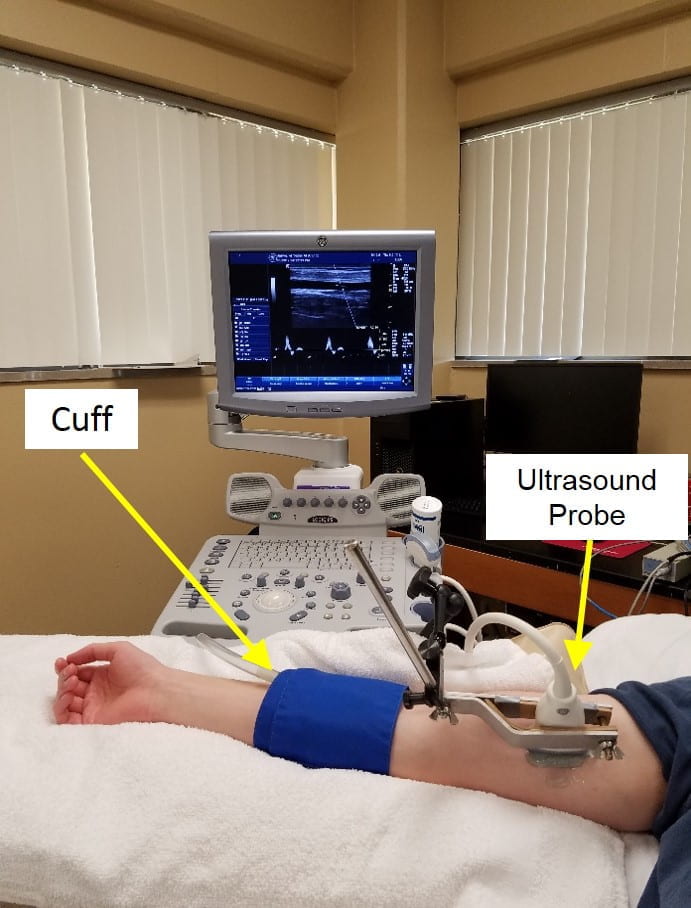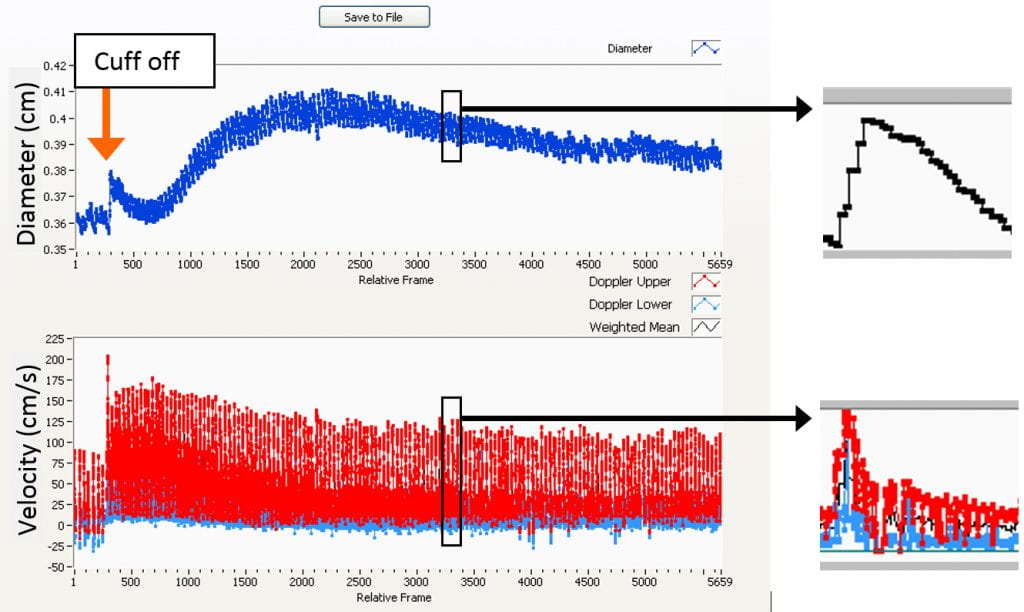
Flow-mediated dilation (FMD) is a non-invasive technique used to measure endothelial vascular function. Baseline diameter and blood velocity in the artery of interest are measured via duplex Doppler ultrasound. After baseline measurement, a cuff placed distal to the Doppler probe is inflated to supra-systolic pressure for 5 minutes. After the cuff release, diameter and blood velocity in the brachial artery are measured continuously for up to 3 minutes. Cuff inflation on the arm causes ischemia leading to vasodilation of downstream resistance vessels. Upon cuff deflation, reactive hyperemia (microvascular function) causes increased shear stress in the brachial artery. This increase in shear stress induces NO-mediated vasodilation in the brachial artery (macrovascular function). The same technique can be applied to measure endothelial vascular function in other peripheral arteries (e.g., popliteal artery).
Experimental setup for FMD in right arm of a subject.
Beat-to-beat analysis of brachial artery diameter and blood velocity after cuff deflation (orange arrow) in our custom designed Labview software.

